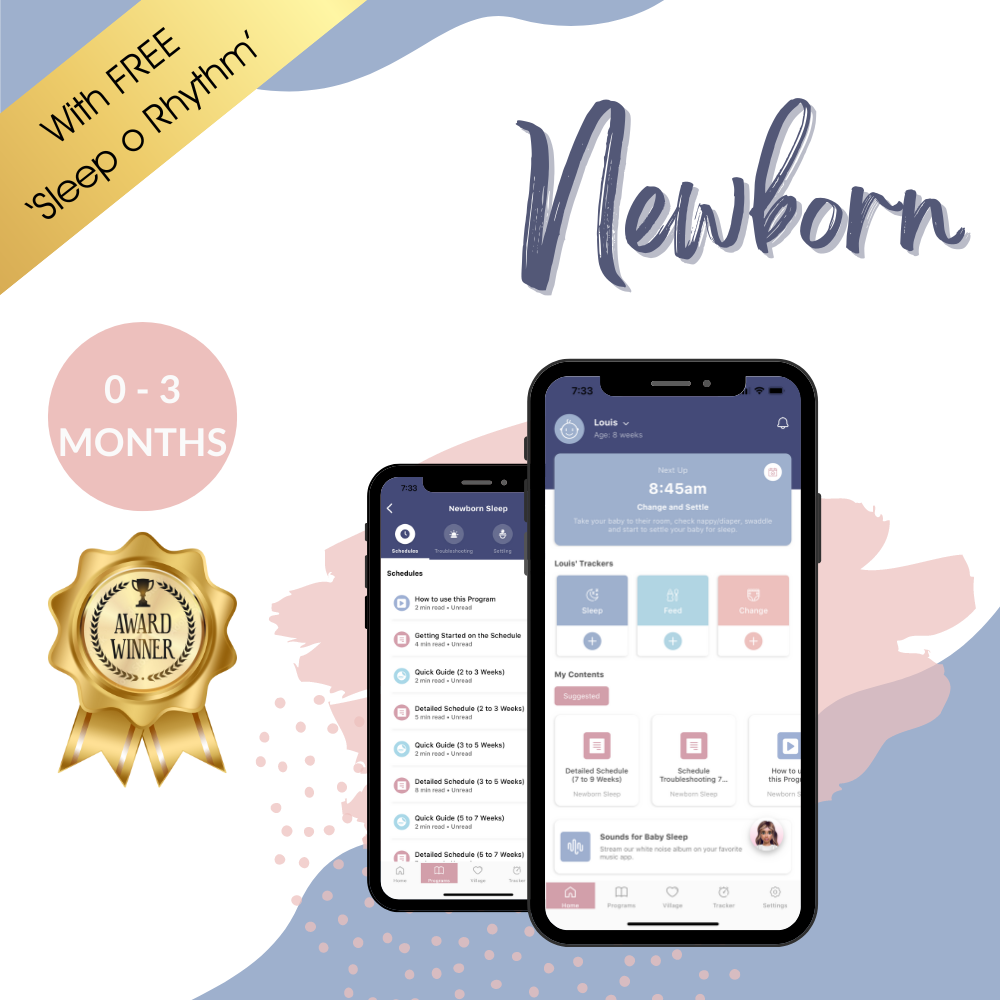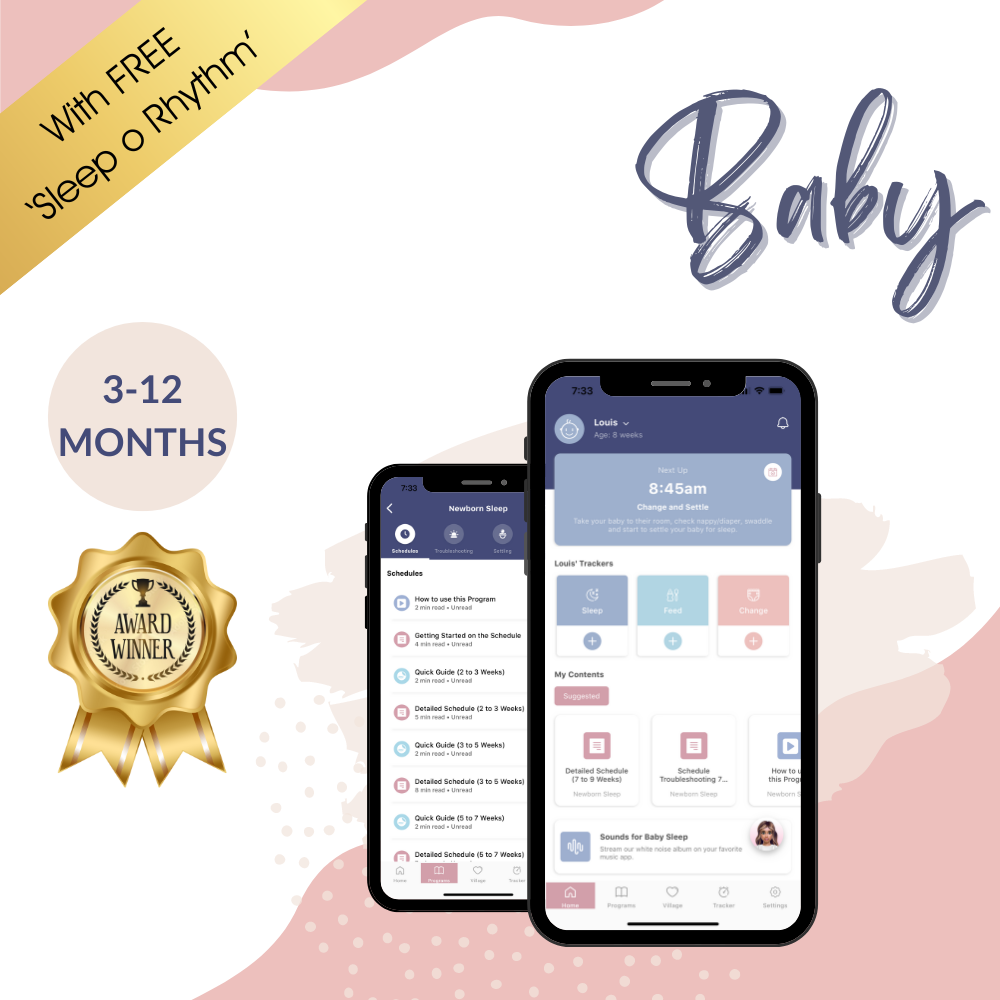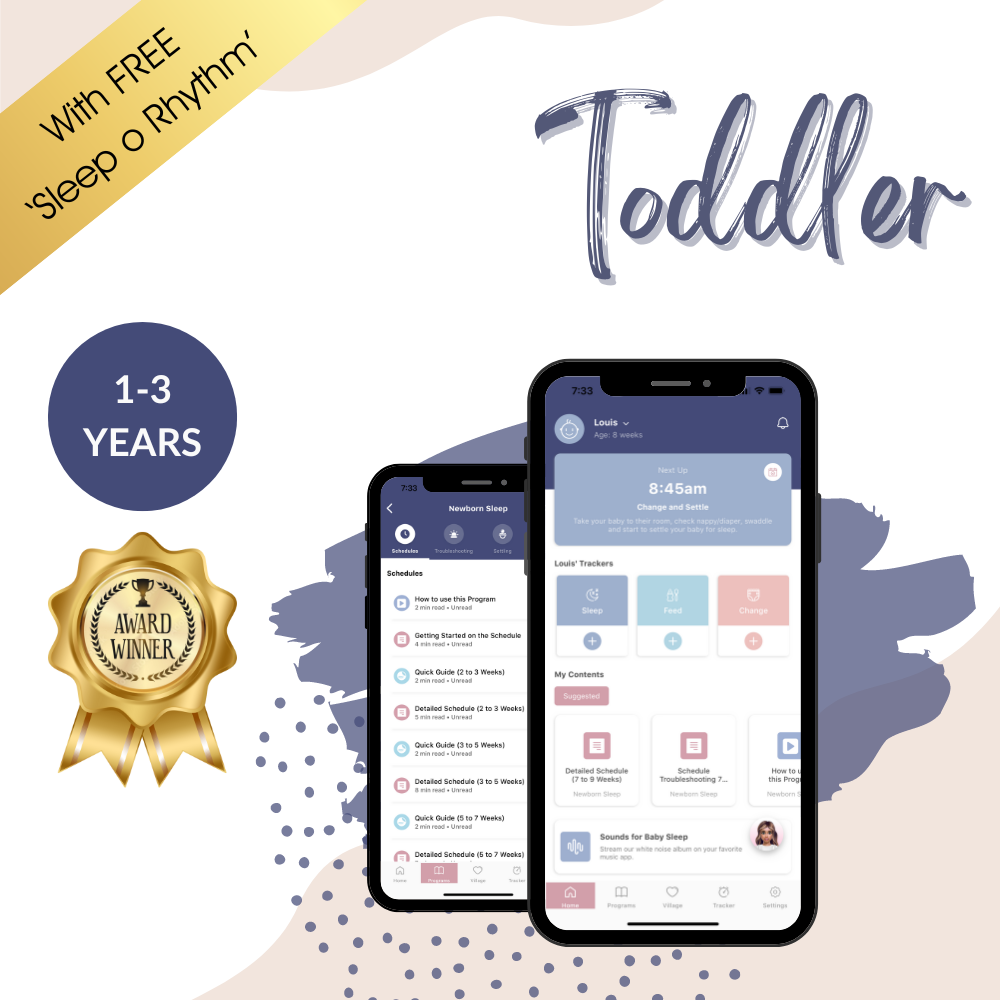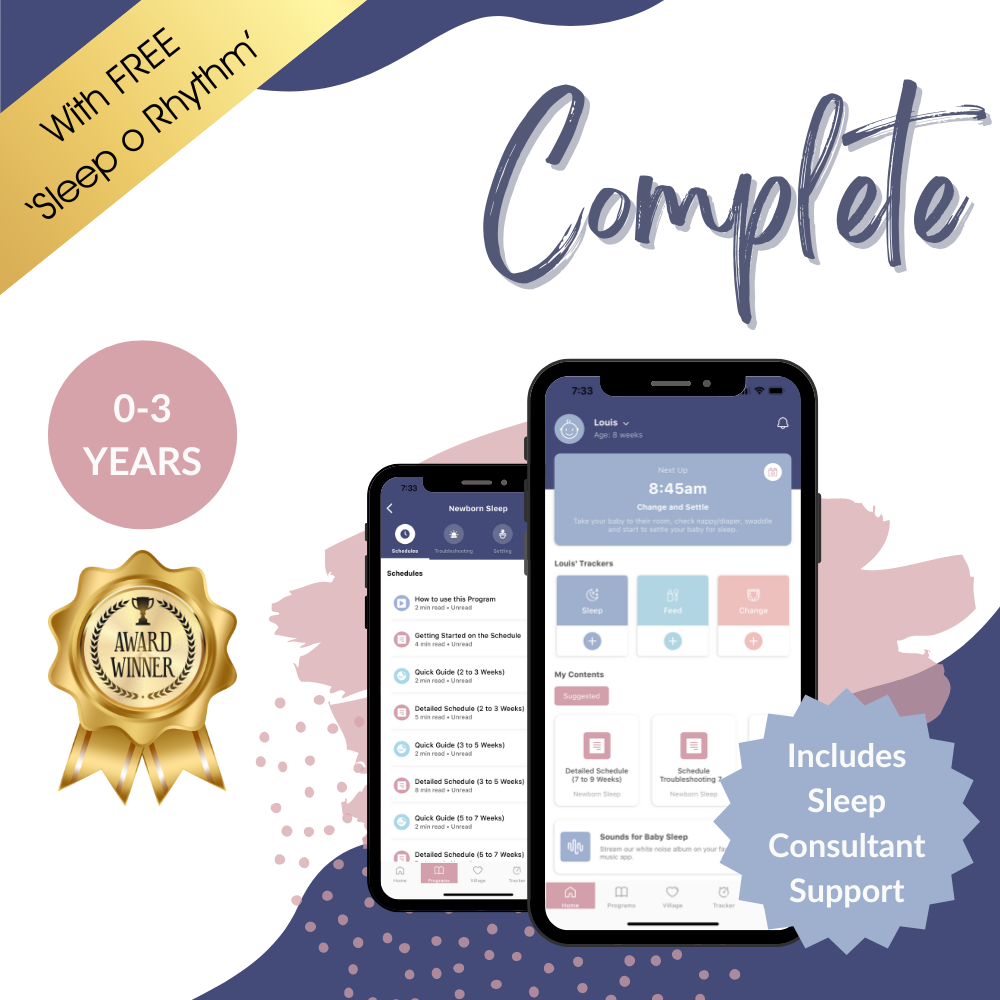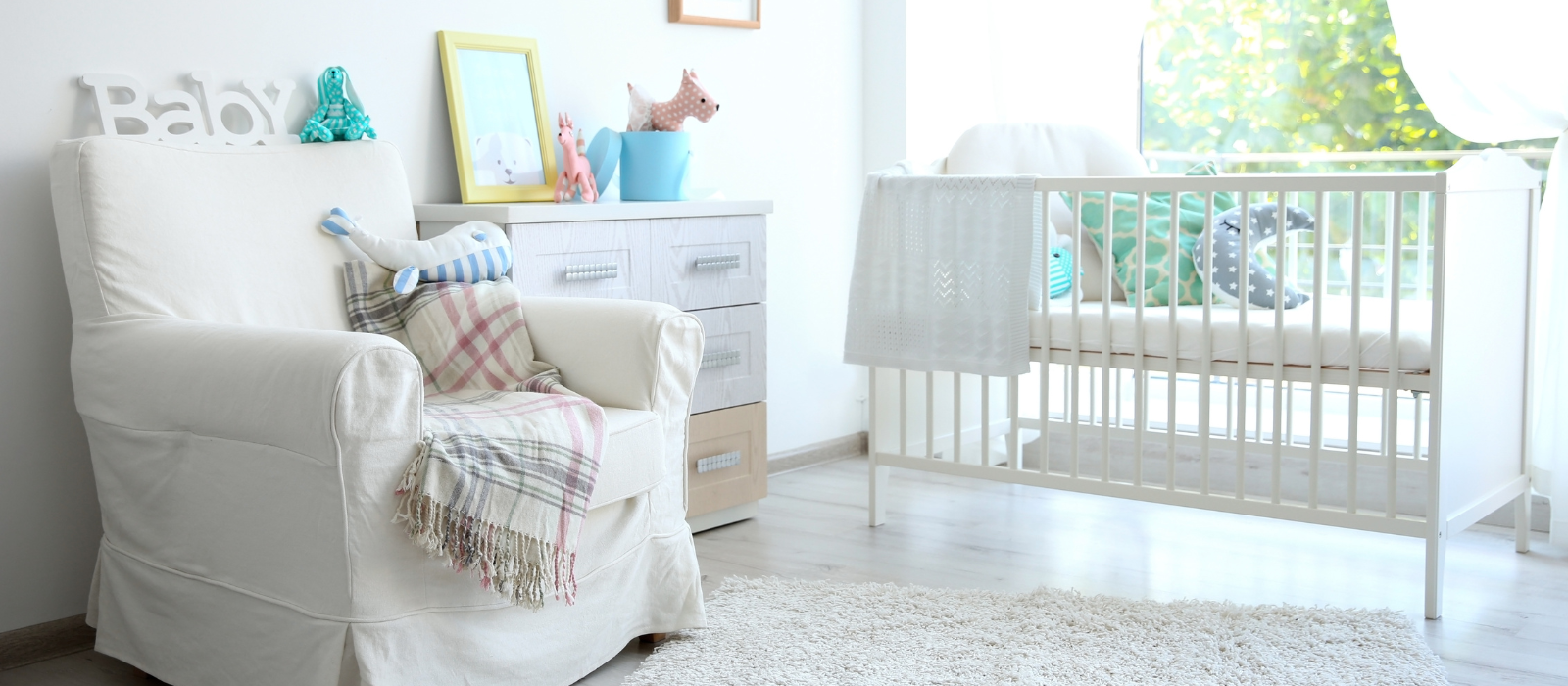
Setting up the Ideal Sleep Environment
By Nicky Barker (BA, Grad. Dip Tch, University of Auckland), Pediatric Sleep Science Expert
Whether your baby is going to sleep in your room with you or in their own room, this article contains our best tips to setting up the perfect environment for sleep. It is not hard to create a sleep sanctuary and by keeping it simple, your baby will be lulled into the zone for sleep in no time!
When we're helping families with the little ones' sleep, the sleep environment is always one of the first places we look to improve. Many many times a baby or toddler's sleep can be dramatically improved by tweaking just a few things in their sleep environment. This happened to Felicity and baby Matilda in this case study.
Here are our recommended items to achieve this:
Struggling with overnight wakes?
We can help you get more sleep! With the customized sleep schedules, effective settling methods and personalised support available in our Sleep Programs, you and your little one will soon be sleeping soundly.
Get our Sleep Programs
A Dark Room
Crucial to good settling and sleep, a dark room can be achieved using blackout blinds or simply by putting a dark sheet or blanket under or over the existing curtains. You want to cover any light that might be sneaking in around the edges of the curtain. Babies do not fear the dark, in fact, like most mammals, they actually find the dark comforting, calming and safe as it is a natural part of their circadian rhythm. Do not use a nightlight as the light can be very stimulating to babies, making it hard for them to settle or stay asleep for a long period.
Contrary to popular belief, it is not necessary to sleep babies in daylight during the day to avoid any kind of day/night confusion. Having your baby in a good nap pattern for their day and ensuring their naps are at the right time and the right length will naturally help your baby understand the difference between night and day and consolidate their night-time sleep quicker.
By the age of around 8 weeks, your baby's maternal melatonin has worn off and they now need to start producing their own; this is only done in the dark. A dark room will help with your baby settling more easily to sleep, can mean longer naps, more consolidated night-time sleep and also remove the risk of or remedy early morning waking.
White Noise
This is a great, easy settling and sleep tool for young babies. White noise not only replicates the loud whooshing sounds babies hear in the womb (sounds that are louder than a vacuum cleaner in utero), but hearing loud white noise also triggers the calming response in babies, especially if they are overtired, overstimulated or crying. White noise also disguises any noises from the household which might startle or wake a sleeping baby.
We have a variety of white noise tracks available through all streaming platforms, the best of which for babies under 6 months is our Baby Sleep Shhh. Experts recommend playing the white noise louder than your baby's cries (if they are crying) or as loud as a shower to encourage good sleep. Our advice is to play it at around 60dB. We recommend using white noise until at least 1 year of age for a baby's naps and overnight.
Set up a white noise machine or even an old MP3 player connected to a speaker so you can play white noise for your baby’s naps and all night long. The continuous calming sound of white noise will help your baby drift between their sleep cycles and stay in the “zone” for sleep. If you don’t have a device to play white noise on, here are some more options:
★ Static from a radio
★ A fan (pointed at the wall if you don’t need to use it to cool the room down)
★ Playing white noise through your phone or iPad
★ White noise app on your phone
★ Record the sound of a vacuum cleaner or clothes dryer on your phone and play it repeatedly.
Swaddling
Using a swaddle for babies under 4 months is proven to help your baby settle and sleep well. Swaddling replicates the tight, confined feeling of being in the womb and ensures babies can't wake themselves up with their startle-reflex. Sometimes we hear that a baby doesn't like being swaddled but more often than not, this is simply because the swaddle isn't tight enough, the baby is already overtired or overstimulated, or they are too hot or cold. In general, babies do prefer to be swaddled.
By the time your baby reaches around 4 months old, or when they start to roll, they can be weaned off the swaddle for sleep.
Read more about swaddling here or watch our video:
Cuddly/Comforter
Having a comforter or cuddly for sleep is a great tool to encourage self-settling in your baby. If they associate the comforter with bedtime and sleep, it will work as a strong signal to your baby when it is bedtime. Choose a comforter that is age appropriate, washable and preferably one that you can purchase two of (so you can interchange them when you need to wash one!). Keep the comforter close to you for a few days, in your bed or under your top or next to you and baby while feeding, so it absorbs your scent. Then give it to baby for every nap and at night-time. Make sure you never place objects close enough to your baby's face that they can become a suffocation hazard.
Remove everything from your baby's sleep environment that is not completely conducive to sleep - excessive toys and musical mobiles are often are hindrance to a baby's ability to self-settle. Why sleep when you have all these toys and stimulating things to look at?!
Feeling confused about your baby's sleep needs?
Let our sleep experts help you every step of the way. Together we can solve your little one's sleep challenges
Get our Sleep Programs
Bassinet / Crib
Wherever your baby is sleeping, make sure it’s safe for them. This means they are in their own sleeping space, lying on their back, their mattress isn’t too soft and there are no loose blankets or toys in the bed with them.
Using natural fibres for your baby’s bedding is the best choice - try and avoid synthetic or manmade materials as these do not breathe and your baby can be at risk of overheating.
We recommend cotton, bamboo or merino bedding.
Instead of blankets, invest in some good swaddles; your baby will thank you for it! Swaddling your baby increases their chances of sleeping better because they can’t wake themselves up as frequently with their startle reflex. Fitted swaddles are a good option as they are snug, safe and easy to put on. Again, opt for swaddles that are made of natural materials which allow optimum breathability.
Temperature
Babies take a while to learn to self-regulate their body temperature and during that time, can be very sensitive to even slight changes in temperature. While it might seem tempting to want to bundle your baby up, be careful not to over bundle them - if they’re too hot your baby cannot simply release body heat to cool down.
The best temperature for your baby’s sleeping space is advised to be around 18 degrees C, which is 64 degrees F. This does seem quite cool, however like most of us, babies sleep better when the room is cool but they’re nice and warm. If you need to warm your baby’s room up to get it to this temperature, use a thermostat on the heater to maintain the temperature and not risk overheating the room.
Always keep an eye on your baby’s nursery temperature if using a heater.
Checking your baby is warm enough can be done by feeling their core - their chest or back. Your baby’s hands, feet and face may feel cooler and this is totally fine as long as they’re not “cold”. Lay your hand on their chest or back to feel their accurate body temperature and if they feel clammy or sweaty, remove some layers. If their core feels cool to the touch, add some layers.
| Room Temp | Tog Rated Bag | Winter Weight Merino Bag | Mid Weight Merino Bag | Summer Weight Merino Bag |
| 26 C/ 78 F | 0.5 tog & short sleeved bodysuit | Short sleeved bodysuit | ||
| 24 C / 75 F | 1.0 tog & short sleeved bodysuit | Short sleeved bodysuit | Long sleeved bodysuit | |
| 22 C / 71 F | 1.0 tog & long sleeved bodysuit + pyjama pants | Long sleeved bodysuit & pyjama pants | ||
| 20 C / 68 F | 2.5 tog & short sleeved bodysuit + pyjamas | Short sleeved bodysuit & pyjamas | Long sleeved bodysuit & pyjamas | |
| 18 C / 64 F | 2.5 togLong sleeved bodysuit + pyjamas and socks | Long sleeved bodysuit, pyjamas and socks |
Baby Monitor
Many parents choose to use a baby monitor in the nursery. This is definitely a good choice if you’d like to be able to put your baby down in their crib for a nap, leave the room and get things done or have a rest yourself. Once your baby is sleeping in their own room, a baby monitor is an excellent way of still being able to hear and/or see your baby throughout the night and respond to them if they need you.
A lot of monitors come with the function to display baby’s room temperature - this is very helpful to know! By monitoring the temperature of the nursery you’re better able to dress your baby in appropriate clothing and bedding, making their sleeping environment safer.
Video monitors are a more expensive option, but worth it if it’s within your budget. You’ll be surprised what you can learn about your baby’s sleep habits by watching them fall asleep! Being able to see the exact time your baby falls asleep and wakes up will mean you’re better able to accurately work out their next awake window.
Some babies can lie in their beds awake but totally silent for quite a while and if you’re not able to see them, you might think they’re still asleep! This might mean your timing of your baby’s next awake period is not accurate and can result in an overtired baby.
Lighting
You definitely want to maintain the dark room for your baby’s naps and overnight, but have a think about your use of a light to tend to your baby during the night. You probably don’t want a full lamp switching on and off while you’re up doing night feeds, because each time, your baby will be pulled out of their sleep zone by the light.
Babies have a very sensitive circadian rhythm and light exposure can reset their body clock into thinking it’s daytime.
If you have a nightlight for your baby’s room, this would be the ideal time to use it, then turn it off again for their sleep. Nightlights that emit a red light are best - the red glow is far more sleep inducing that a bluer light.
You could also use the torch function on your cell phone or leave the hall light on and open the nursery door slightly to get the light spill.
Conclusion
Without a doubt these factors will all have a positive impact on your little one's sleep and most of them are very easy to immediately implement. If I had to choose 2 to prioritise right now, definitely the dark room and white noise will provide quick wins.
If you're battling with your baby or toddler's napping, settling or sleep in general, please reach out to us and we can start resolving those sleep challenges together.
Let's get your little one's sleep sorted ASAP!Our award-winning Sleep Programs will solve your baby's sleep challenges in no time.
Get our Sleep Programs


